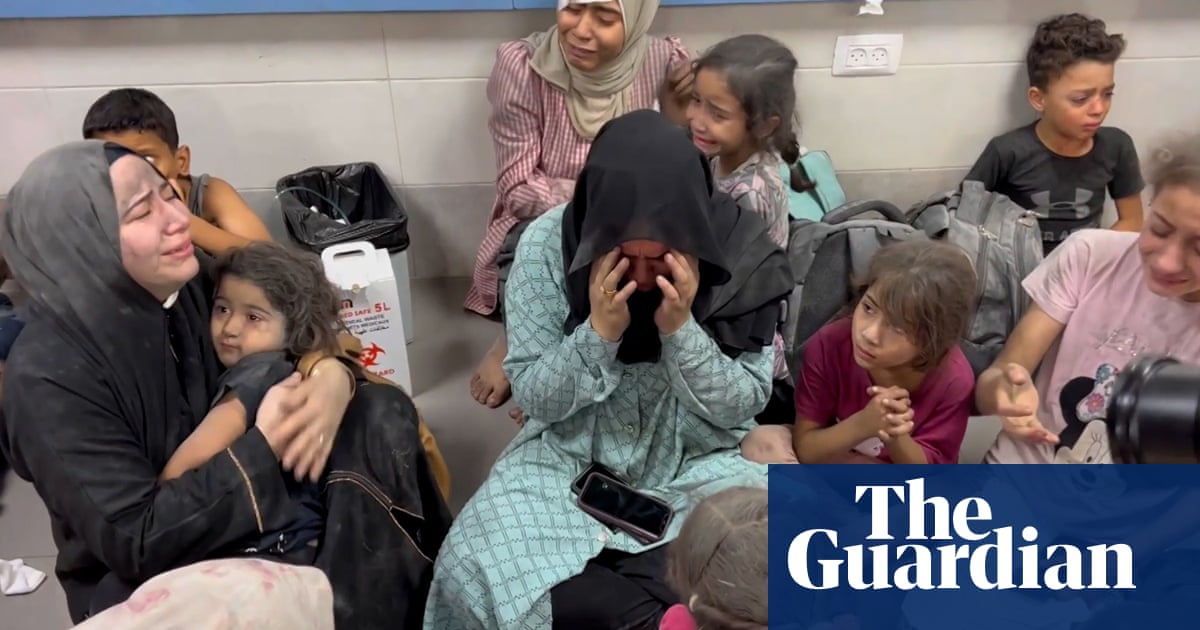
Doctors are troubled by the high number of disabling wounds, especially to the legs and knees, with Israel facing questions over both its disproportionate use of force and the types of ammunition it is using against demonstrators
Since the protests began, Israeli troops have shot more than 1,500 people
GAZA CITY: When Palestinian Mohammed Al-Mughari was shot by an Israeli sniper on the Gaza border, it left a hole in his leg so big he says he could fit a finger into it.
Over a month into mass protests, more than 40 Palestinians have been killed and at least 1,500 wounded by Israeli fire during the “Great March of Return,” a major protest movement along the border between Gaza and Israel.
Doctors are troubled by the high number of disabling wounds, especially to the legs and knees, with Israel facing questions over both its disproportionate use of force and the types of ammunition it is using against demonstrators.
Three weeks after being shot, 28-year-old Mughari’s leg is propped up and wrapped in plaster, but he’s not in the clear yet. He knows there is still a possibility it might need to be amputated.
The bullet destroyed “30 centimeters of bone in the leg,” he told AFP from his hospital bed in Gaza City.
Since March 30, thousands of Palestinians have gathered every Friday at points along the border separating the besieged Gaza Strip and Israel.
The marchers are demanding the right to return to their homes seized by Israel in 1948.
While most of the crowd stands a few hundred meters (yards) from the border fence, smaller numbers have pushed closer to burn tires and throw stones.
In response Israeli snipers have fired live ammunition.
Mughari declined to say whether he threw stones, but he thinks it may be years before he can return to his restaurant job.
“I was planning to get married soon. I’m not thinking about it anymore,” he said.
The Israeli army says it fires live rounds only as a “last resort” to protect soldiers and the fence.
It has accused Gaza’s Islamist rulers Hamas of exploiting the demonstrations and using the protesters as human shields.
Since the protests began, Israeli troops have shot more than 1,500 people. The vast majority are young men, and most of the wounded were hit in the legs, according to the health ministry in Gaza.
Twenty-one people have had limbs amputated.
Among those killed there have been two journalists and several teenagers.
The asymmetry of force has brought criticism of Israel’s policies.
No Israelis have been injured since the protests began.
The European Union and others have called for an investigation into Israel’s response, but the Jewish state has rejected the idea.
The United States, Israel’s strongest backer, has blocked moves for a probe at the United Nations.
Doctors have reported unusually severe injuries.
“What is unusual is the lesions and the fact that the wounds are very wide, and the bones can be in many fragments,” Marie-Elisabeth Ingres, head of the Doctors Without Borders mission (MSF) in the Palestinian territories, told AFP.
The charity has given nearly 600 people post-operative care since March 30.
Abdel Latif el-Hajj, director general of hospitals in Gaza, accused Israel of using types of ammunition aimed at permanently disfiguring their targets.
He told AFP the army was using “expanding bullets” that separate inside the body, “breaking the bones and blood vessels, causing severe rupturing of the tissue.”
Amnesty International on Friday said some of the wounds appear consistent with bullets that expand inside the body.
Such ammunition is considered illegal in international warfare.
AFP could not independently confirm the claim.
“The nature of these injuries shows that Israeli soldiers are using high-velocity military weapons designed to cause maximum harm to Palestinian protesters that do not pose imminent threat to them,” an Amnesty statement said.
It accused Israel of “deliberate attempts to kill and maim” protesters.
In a statement the Israeli army said it was only using “standard weapons and ammunition that are lawful under international law,” and accused Gaza’s health ministry of regularly spreading false information.
Gaza’s severely limited medical facilities have been stretched thin by the number of injuries.
Hajj estimates they have only a few weeks of saline solution and antibiotics left.
They also have only around 50 orthopaedic devices, used to support damaged bones or replace destroyed ones.
“I suspect they will be gone in a week,” he said.
Ingres from MSF thinks hundreds of people will need costly treatment for months, if not years, with the risk of infection and further amputations if quality treatment is not given.
“The impact will be long term — not only on the individuals but on the health system, on their families, on the society in total.”








